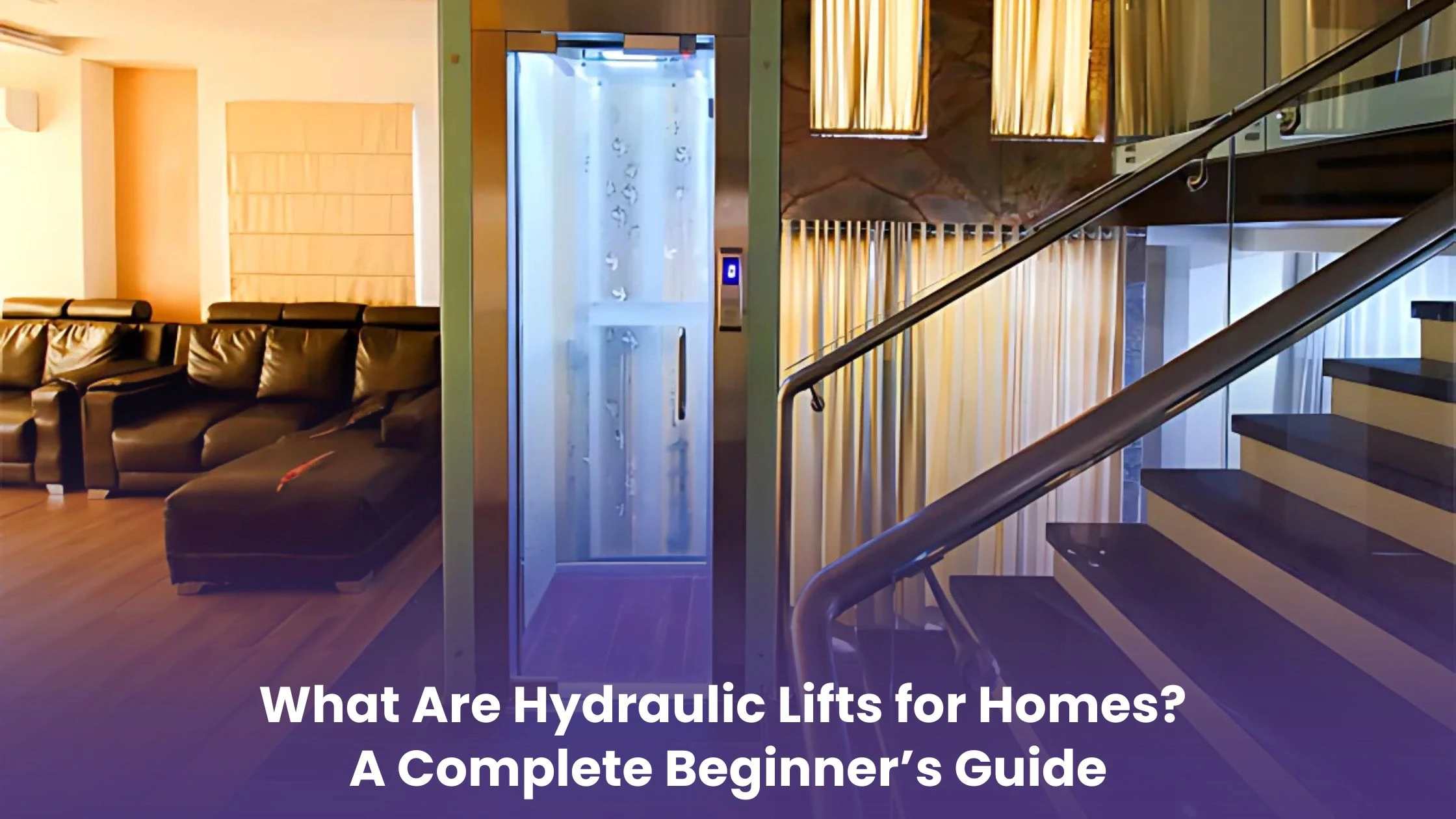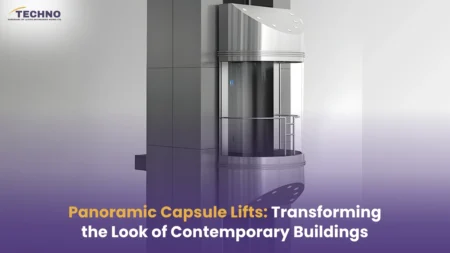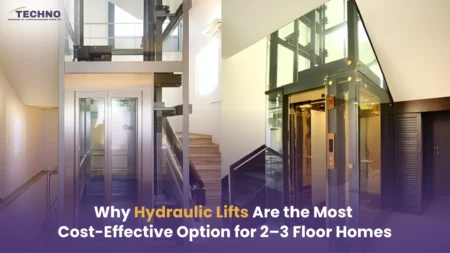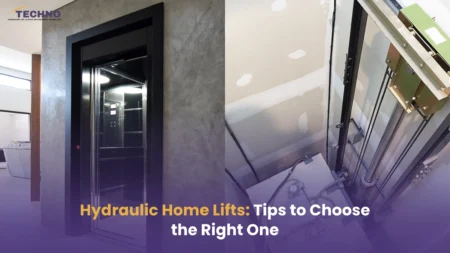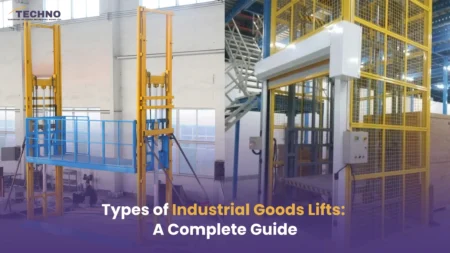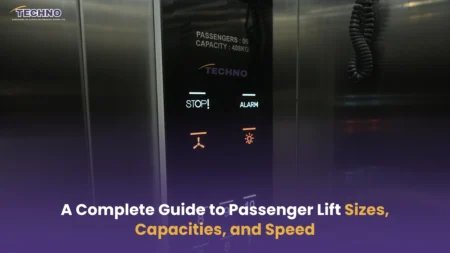When Elevators Don’t Need Ropes: Understanding Hydraulic Lifts
Most people picture elevators as those rope-driven enclosed metal boxes you hop in at the mall, or the office, or maybe at a hospital. But there is another type of lift that operates without counterweights or steel cables – the hydraulic lift. Whether you are a builder preparing your company’s mid-rise apartment building, a hospital administrator retrofitting a patient elevator, or a society looking to improve that slow, creaky lift, knowing how hydraulic lifts work can save you money, time, and a great deal of structural headaches.
This hydraulic lift guide would explain simply and informally how a hydraulic lift works, where it is used, what it is made of, and where it may be of use.
What is a Hydraulic Lift?
A hydraulic lift is simply an elevator that uses pressure from a fluid to lift things instead of belts and pulleys. In this hydraulic elevator system, a pump pushes fluid into one or several cylinders to raise an elevator car. The hydraulic lifts go down with the assistance of gravity, aided by a pressure release valve that controls the descent rate.
Powered by hydraulic elevator systems, in contrast to traction lifts, Hydraulic Lifts require no overhead machine room or counterweights. This is an option for buildings of five to six stories when the building, budget, and performance requirements all fit together.
So, what are hydraulic lifts made for, and where do they fit best?
Hydraulic lifts are functionally impressive and adaptable as machines. Their versatility will address numerous vertical transport applications without the requirement for significant design changes to your existing facilities.
Here is a list of the situations where hydraulic lifts will work best for you:
- Residential buildings and villas: Quieter operations and low pit depth will accommodate many residential uses.
- Hospitals and clinics: Efficient, smooth, and stable travel is particularly useful for patient transportation in stretchers or wheelchairs.
- Commercial buildings, mid-rise or less: Low-cost, low-maintenance property elevator solution for office floors.
- Public infrastructure: These lifts will work well in bus depots, railway stations, and airports where frequent access is required.
Hydraulic lifts are also chosen for retrofitting in older buildings that lack elevator access and are attractive to not need to contend with lift shaft design in older structures due to their load carrying capacity limitations and structural simplicity.
An Overview of the Hydraulic Lift Working Principle
The hydraulic lift working principle relies on Pascal’s Law: when you apply pressure to a section of fluid in a continuous container, it is felt equally from all directions. For a lift system, this means when you pump oil into the cylinder the oil pushes the up and down compressors, thus lifting the elevator car.
Let’s break it down further.
- Oil Reservoir: Stores hydraulic fluid when not in use.
- Pump: Engine that forces oil into the cylinder.
- Cylinder and Piston: When fully engaged, the hydraulic system allows oil to enter the cylinder and develop pressure that pushes up on the piston to raise the lift.
- Control Valve: It controls oil flow from the pump to the cylinder, allowing pressure to be relieved on the lift; it can stop smoothly or completely.
- Controller Unit: Comes with a lift operating system and controls lift operation and door timing, along with safety logic.
When the lift needs to come down, the pump will turn off and a valve will slowly release the oil back into the tank, while the cab lowers by gravity.
This makes derailing hydraulic lifts cost-effective in terms of energy when descending, while traction systems will draw power in both directions.
Main Components of a Hydraulic Lift: What is inside?
The hydraulic lift components will help you understand the working of hydraulic elevators work. What components does a typical hydraulic lift system consist of?
- Power Unit: Complete with motor, pump, and valve
- Hydraulic Cylinder: The thick-walled tube that has the piston
- Piston Rod: The part that raises the elevator car platform
- Guide rails: Maintain proper alignment of the coasting components in the vertical position
- Landing Doors & Car Doors: The doors are interlocked for safety
- Emergency System: The emergency system is used in the case of power outages; the emergency system usually permits manual lowering
All of these parts are designed for smooth and safe operation in a quiet environment. At best, a hydraulic lift system would offer years of safe and efficient service when durable materials are used, serviced regularly, and appropriately used.
Types of Hydraulic Lifts: Choosing the Right One
There isn’t just one standard hydraulic lift. Depending on your building, usage, and shaft space, there are several types of hydraulic lifts available:
Holed Hydraulic Lift:
- Uses a piston in a cylinder placed in a hole below the pit.
- Suited for high travel ranges but requires deep excavation.
Holeless Hydraulic Lift
- No need for drilling. The piston is beside the shaft.
- Perfect for retrofit projects and basements.
Roped Hydraulic Lift
- Combines a hydraulic cylinder with ropes and sheaves.
- Offers higher travel with a smaller piston size.
Every one of these lifts has a price and application, and choosing the right one depends on your building, the availability of shafts, and your budget. Hence, we always recommend a site visit before you commit to your chosen elevator solution.
What is the load capacity of hydraulic lifts?
Hydraulic lifts are normally regarded for their great lifting capacity and stability. They can support and carry anywhere from:
- 250kg-10,000kg or more
- Residential: capacity of 2-4 passengers
- Heavy-duty lifts are intended for beds, stretchers, or even vehicles
Hydraulic elevators use mechanical work to develop their lifting material, by hydraulic fluid pressure; the fluid pressure can develop a mechanism to use more power to operate it, hence, powerlifting. They are often fully loaded, which is why they would serve well in hospitals, commercial buildings, and industrial applications.
The Hydraulic Lift Mechanism vs. Traction: The Importance
Knowing what the hydraulic lift mechanism is will help you decide if it is the better option when finishing your project instead of a traction system.
Why is it that many building owners prefer it?
- Less Space: No separate machine room above the lift shaft
- Easier Civil Work: It can particularly reduce civil work with holeless hydraulic models
- Less Initial Cost: It can be a better fit for mid-rise and residential projects, and improve efficiencies
- Reliable Up and Down Performance: Especially under load conditions of heavy and/or slow-moving loads
However, for high-rise buildings or if speed is the top key need for your project, traction elevators are typically the better performer as they help you go faster. We are here to help you make your decision based on your project needs.
Maintenance and Safety: Keeping Things Running Smoothly
Regular maintenance is critical for any lift system. With hydraulic lift operation, a good portion of the burden is lifted: fewer moving parts and therefore less chance for breakdowns. Here is what regular service covers:
- Check oil level and condition
- Calibration of the valves for smooth stopping
- Inspect seals and pistons
- Testing of the safety brake and mechanism for manual lowering
- Upgrades to the control panel
At Techno Elevators, we also deal with preventive maintenance to assist building managers and owners with stoppages and costly repair work, while ensuring reliability over time.
Applications of Hydraulic Lifts in Different Buildings
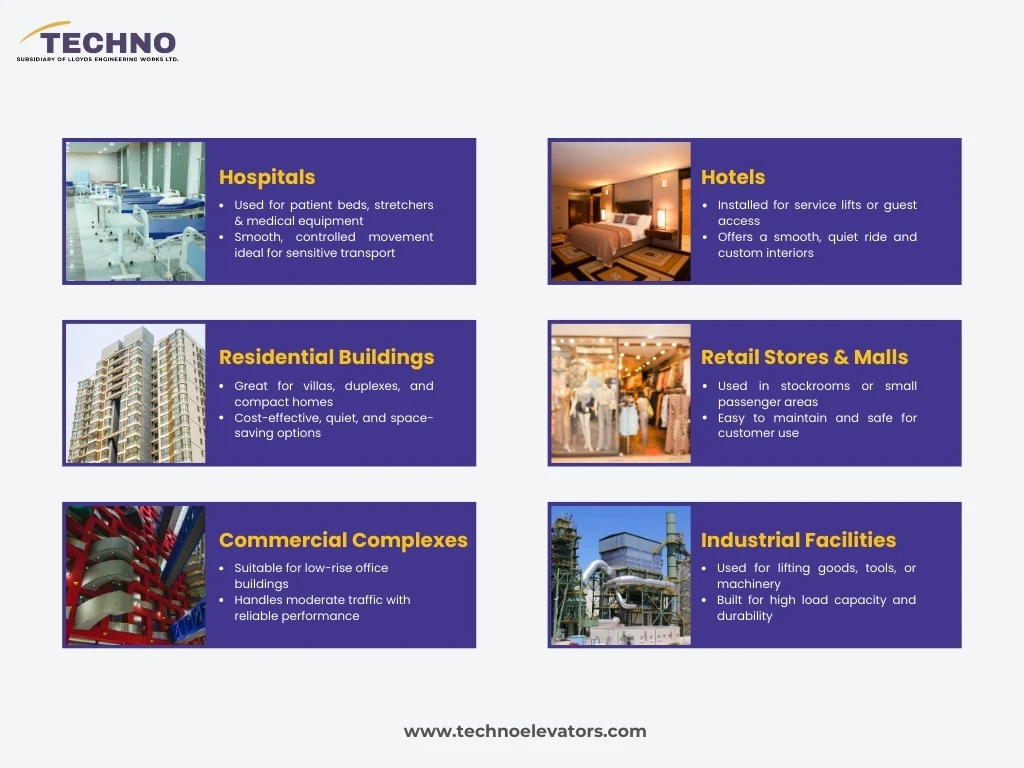
Final Thoughts:
Still think of elevators as a luxury item? It’s time to revisit that view; at no point in the future are luxury elevators going to be a good thought to have in 2025.
A hydraulic lift is much more than an elevator; it is the unobtrusive, future-proof way of transporting people and goods in a safe, quiet, and stylish manner within your building. It reduces disruption of workspaces, saves the building space, sensibly moves the heaviest goods, and reduces long-term carrying costs.
With decades of combined experience in the elevator lift industry, as a team, we at Techno Elevators believe the right elevator lift system explained above is a wise investment in proper infrastructure. An investment that has a return on investment in several ways, including convenience of use, ease of use, and efficiencies.
Know More About Hydraulic Lifts
Picture this: a stylish, quiet lift glides up through your home and stops exactly where you want it. No noise, no waiting, …
Having been confined to factory warehouses and production units in the past, Hydraulic Lifts are now stealthily stealing the spotlight in modern homes, …
Frequently Asked Questions
A hydraulic lift can carry different weight capacities depending on its design and purpose. Small lifts, like home elevators, can usually handle around 250–500 kg, while larger commercial or industrial lifts can carry several tons. The exact capacity depends on the model and manufacturer.
Hydraulic lifts should be checked and serviced regularly to ensure safe and smooth operation. In most cases, maintenance is recommended every 3 to 6 months. Regular servicing helps prevent breakdowns, keeps the lift safe, and extends its lifespan.
Yes, hydraulic lifts can be installed in homes, and they are a popular choice for residential use. They are compact, safe, and convenient, especially for people with mobility issues. Home hydraulic lifts are also designed to fit into small spaces and add value to the property.
The average lifespan of a hydraulic lift is around 20 to 25 years if it is properly maintained. Regular servicing, timely part replacements, and good usage practices can help the lift last longer and work efficiently throughout its life.
Hydraulic lifts are used in many places, such as residential buildings, shopping malls, hospitals, warehouses, factories, and offices. They are suitable for both people and goods, making them one of the most versatile lift systems available.


